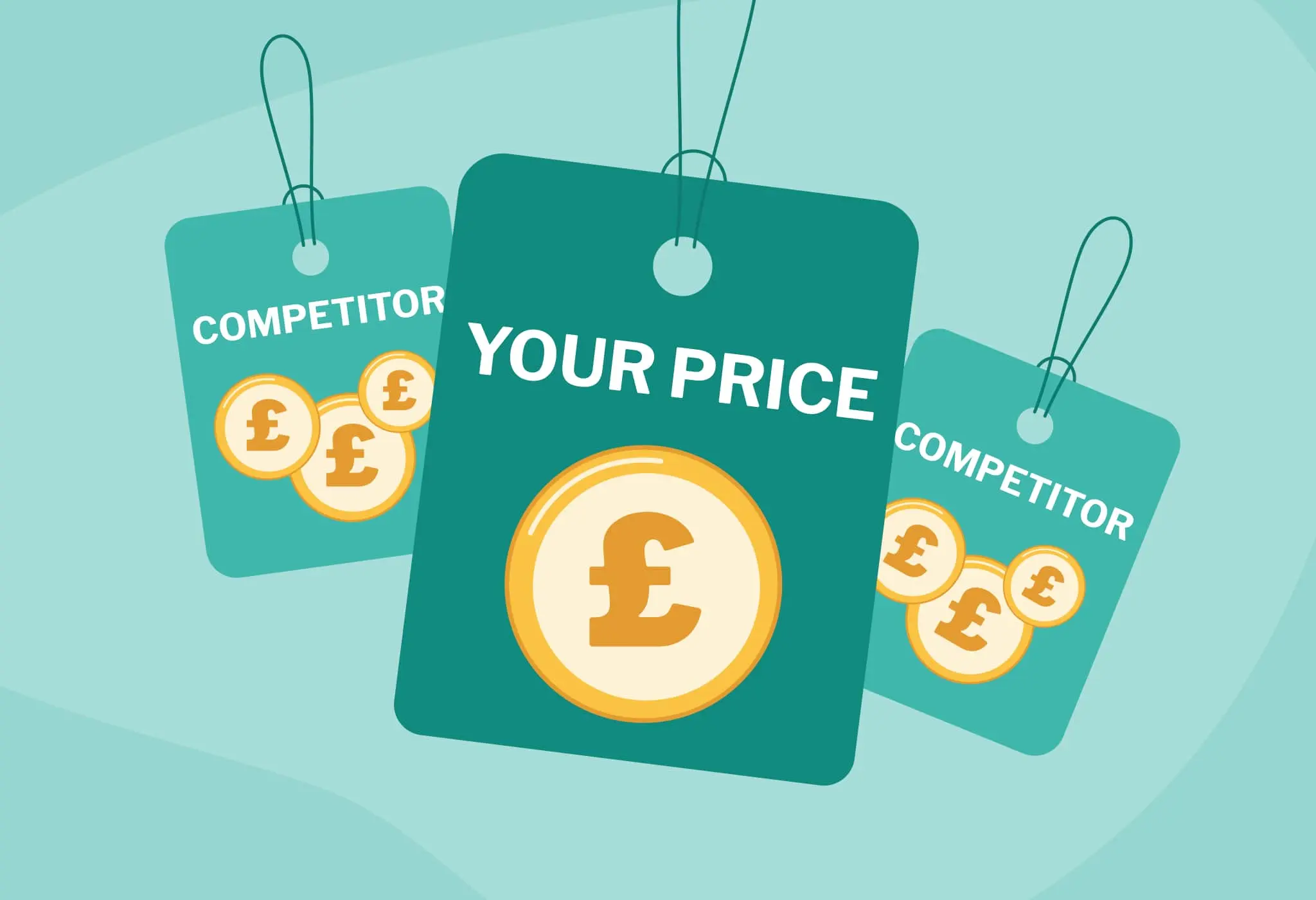Published on: December 9, 2022 | Last updated on: April 1, 2025 |
Everyone has their price, whether they’re a buyer or business owner.
For companies, the right pricing strategy is crucial if you want to succeed online, and penetration pricing could help your brand stand out in an increasingly saturated ecommerce market.
But what is penetration pricing, and how exactly might your brand use it to grow?
In this article, we’ll explain everything you need to know about penetration pricing, including its advantages, potential drawbacks, and why you ought to consider this approach for your business.

Essentially, penetration pricing encourages customers to switch to your product because of its lower price.
If you own a new business and are just starting out, penetration pricing should help to positively distinguish your brand from competitors.
At the same time, if you’re launching a new product where there’s little market differentiation and demand is high, penetration pricing may very well be what draws in new customers (just be careful of product cannibalisation along the way).
Imagine two companies: Company A and B.
Company A is an established brand in the consumer electronics space; Company B has just begun trading.
It costs roughly £200 for Company A to manufacture one of their products, which they sell for £500. However, Company B – who face similar manufacturing costs – decide to retail their inaugural answer to this product for £400. (Note that despite the sale price being less, Company B still makes a profit with every unit bought.)
By using penetration pricing to establish itself as a more affordable brand than Company A, Company B can now attract customers that Company A has priced out, thereby gaining greater market share.
A few advantages of penetration pricing are:
If you catch the competition off-guard with a strong penetration pricing strategy, this could scupper their plans of doing something similar and therefore give you an edge in the market.
Many businesses only look to streamline their operations after they’ve already spent loads. Because penetration pricing works best with a low-cost, high productiveness approach, it forces you to be more efficient from the outset.
Customers are more likely to accept your brand and buy its products if prices are low. Word-of-mouth recommendations based on your pricing, either in-person or via social media, will likely follow.
However, penetration pricing sometimes fails to deliver, for any number of the following reasons:
There’s always the danger with penetration pricing that customers will ‘get used to’ your low rates and expect to pay them forever. If you need to raise prices, so they’re in line with inflation or any increased overheads, customer dissatisfaction is inevitable.
If you own a premium or luxury goods company, having such low prices for goods/services could harm the high-quality reputation of your brand and send customers straight to the competition. This is a brand compliance failure, so make sure you avoid it at all costs.
Established competitors are sharks; they will do anything to remain at the top of their market’s food chain. As a result, your business will need to be on high alert for competitive retaliation throughout the digital shelf.
There’s no denying that penetration pricing has its risks, but if done correctly, you can use this pricing model to get the most out of your ecommerce channels.
Penetration pricing gives your company the chance to do many exciting things, such as:
It is generally accepted that the lower the price, the more likely consumers are to buy.
With penetration pricing, you stand to win over shoppers – and achieve greater market share – if your products are good quality but don’t come with hefty price tags.
Of course, penetration pricing isn’t just about attracting new business; it’s about repeat business, too. How can you be so sure that shoppers will stick by you if another competitor tries this strategy? Well, building brand loyalty is a good place to start.
Consider setting up a rewards scheme for your customers that goes well beyond their first purchase. Make it fun for them to keep coming back and show how much they mean to you with great discounts and/or prizes! This is a great way to ensure customer retention.
Remember, if people are choosing you over your rivals, you must be doing something right. But don’t get complacent; the ecommerce market is always changing, and your position needs to be maintained in order to be retained.
Focus on providing the best deals, as well as optimal products and service; that way, your customers are more likely to remain delighted and continue spending with you.
Depending on consumer demand, penetration pricing combined with a new product launch may increase inventory turnover rate.
If this happens, it will make your vertical supply chain partners, such as retailers and distributors, very happy indeed. Keep an eye on your stock and product availability so customers are never left waiting.
With penetration pricing, your business could – theoretically – attract the lion’s share of customers in a specific market.
An obvious advantage of this is that increased demand for the products you sell means you’ve got the opportunity to scale your company and grow it further as a brand!
If you’re looking to adopt a penetration pricing strategy for your business, we can help.
At Magpie DBX, our price tracker provides 24/7 reporting that shows all your products, and those of your competitors, in one central hub. You can even view price changes over time and get alerts when prices change, so you’re always able to make the right pricing decisions for your brand.
Ready to try penetration pricing with Magpie’s support? Get in touch with us and request a demo today!
Also, be sure to follow us on social media for all the latest Magpie DBX updates.

As the ecommerce world expands, the online consumer market becomes more competitive than ever. It is therefore vital that your business seizes the moment and addresses (arguably) its greatest challenge: pricing.
The right pricing strategy will help you gain an immediate advantage over your competitors when it comes to selling via the internet. And MAP pricing is definitely worth considering as you look to safeguard your products from counterfeiters and promote your brand.
In this article, we look at what MAP pricing is, why it should matter to growing ecommerce businesses, and how you can set it up for the best results.

Everyday low pricing is a popular tactic among retailers, especially in North America.
Many big-name businesses, including Walmart and Amazon, have used this pricing model to get where they are today – i.e., taking lots of sales!
And who knows? If it’s worked for them, maybe it’ll work for you, too.
In this article, we look at everyday low pricing and how it can help give your retail pricing strategies a competitive edge.
Want to learn more about how Magpie DBX can help your business? Get in touch with us and let us show you!




